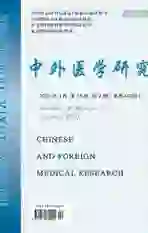高血压脑出血予以微创下置管抽吸液化引流手术治疗的效果及对神经功能的影响
2020-05-11王杰
王杰

【摘要】 目的:探讨高血压脑出血患者应用微创下置管抽吸液化引流手术的效果及对神经功能的影响。方法:将2017年3月-2019年5月笔者所在医院收治的108例高血压脑出血患者作为研究对象,按照随机法将其分为对照组(54例)和观察组(54例)。对照组采用保守治疗,观察组采用微创下置管抽吸液化引流手术治疗,比较两组患者治疗效果及神经功能。结果:治疗后,对照组神经功能损伤评分明显高于观察组,差异有统计学意义(P<0.05)。对照组临床治疗总有效率为72.22%,明显低于观察组的94.44%,差异有统计学意义(P<0.05)。结论:通过对高血压脑出血患者予以微创下置管抽吸液化引流手术治疗,能够提高治疗效果,改善患者神经功能,有利于患者预后,临床应用及推广价值极高。
【关键词】 高血压脑出血 微创置管 抽吸液化引流手术 临床效果 神经功能
doi:10.14033/j.cnki.cfmr.2020.02.054 文献标识码 B 文章编号 1674-6805(2020)02-0-02
[Abstract] Objective: To investigate the effect of minimally invasive catheterization aspiration liquefaction drainage operation on neurological function in patients with hypertensive intracerebral hemorrhage. Method: From March 2017 to May 2019, 108 patients with hypertensive intracerebral hemorrhage admitted in our hospital were selected as research objects and randomly divided into the control group (54 cases) and the observation group (54 cases). The control group received conservative treatment, while the observation group was treated with minimally invasive catheterization aspiration liquefaction drainage operation. The therapeutic effect and neurological function of the two groups were compared. Result: After treatment, the score of neurological function injury in the control group was significantly higher than that in the observation group, the difference was statistically significant (P<0.05). The total effective rate of clinical treatment of the control group was 72.22%, which was significantly lower than 94.44% of the observation group, the difference was statistically significant (P<0.05). Conclusion: Minimally invasive catheterization aspiration liquefaction drainage operation for patients with hypertensive intracerebral hemorrhage can improve the therapeutic effect, improve the patients neurological function, and is beneficial to the prognosis of patients. It is of high clinical application and promotion value.
[Key words] Hypertensive intracerebral hemorrhage Minimally invasive catheterization Aspiration liquefaction drainage operation Clinical effect Neurological function
First-authors address: Huangshi Second Hospital, Huangshi 435000, China
脑血出在临床上属于一种较为常见的神经科疾病,该病通常是由于非创伤性脑实质内血管破裂所致,且具有发病突然、病情变化快及致死率高等特点,倘若得不到及时有效的治疗,极易导致脑血肿等并发症,加重了脑组织水肿,以至于使脑功能发生发不可逆损害[1]。因此,怎样才能降低颅内压、恢复神经功能等成为治疗疾病的提前。吴凯歌等[2]研究发现,在治疗高血压脑出血患者时,采用微创下置管抽吸液化引流手術进行治疗,能够起到显著的治疗效果。为了探讨行之有效的治疗方案,本文以笔者所在医院近2年收治的高血压脑出血患者108例为研究对象,就不同方案的疗效进行了探索,以供参考。
1 资料与方法
